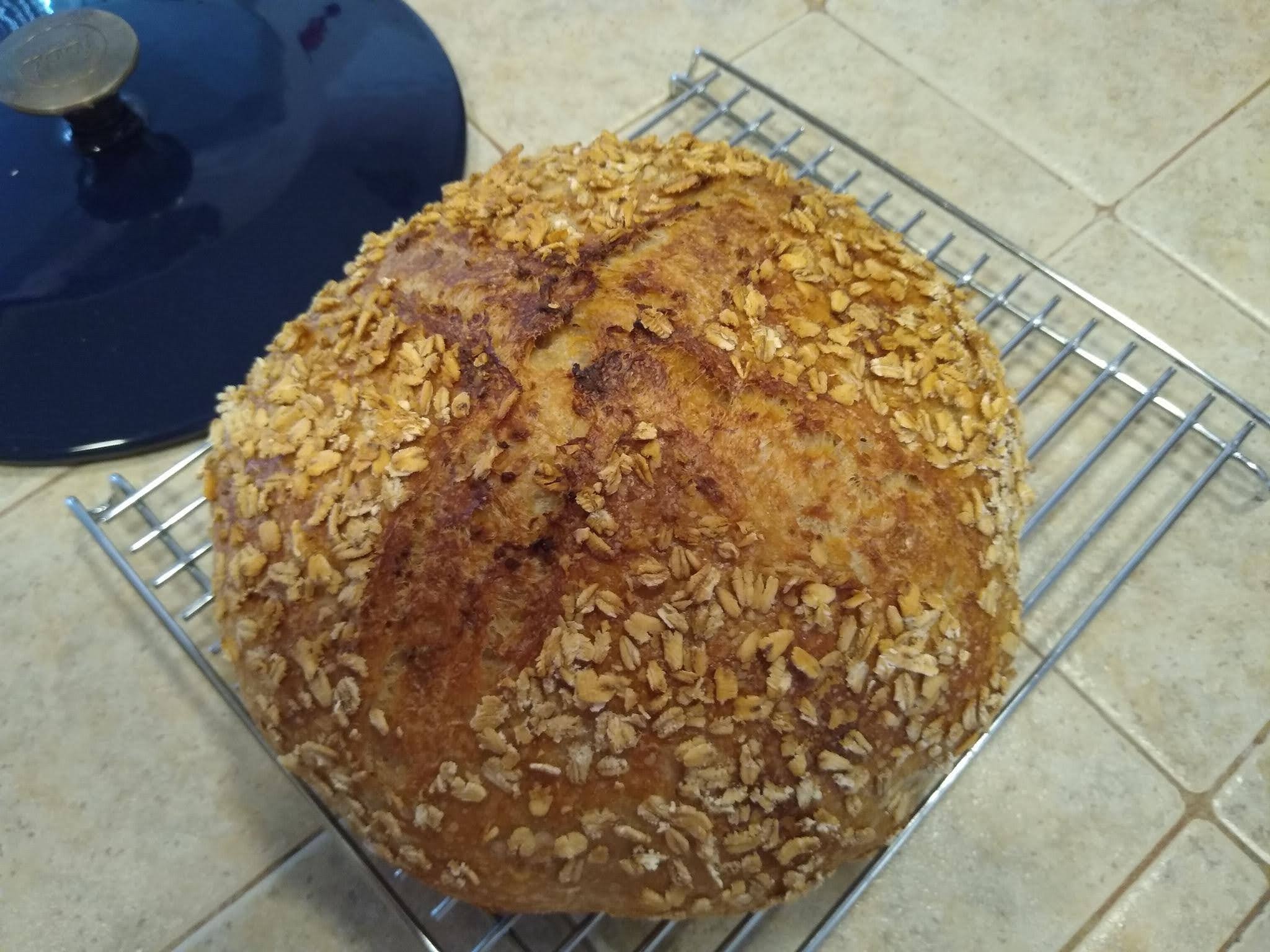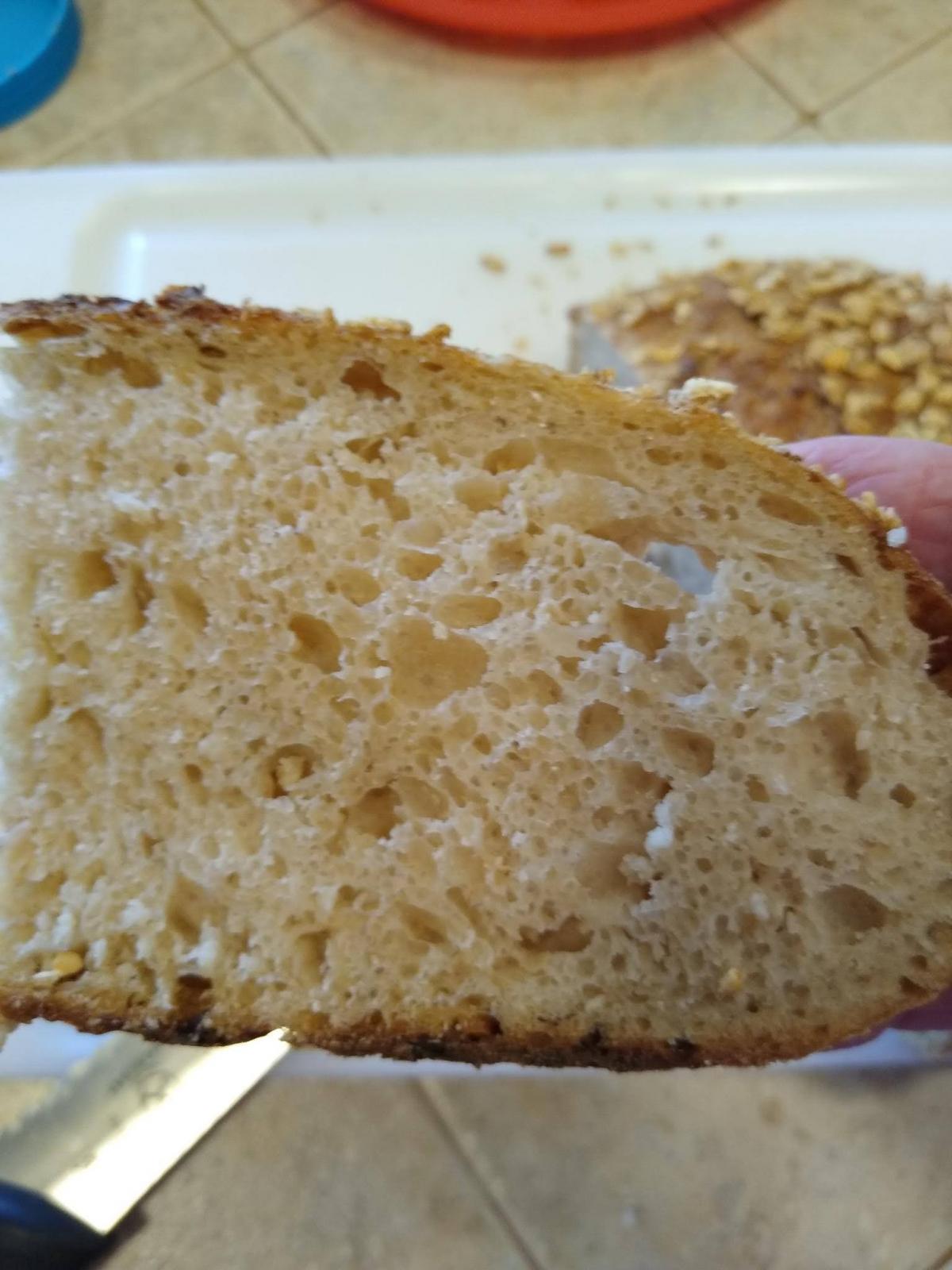This is my first time making a porridge bread. They always looked more challenging than I was ready to tackle. After reading the entire previous CB that featured this bread (read it several times, lol), I decided to go ahead and give it a try.
Levain:
75 gm, half bread flour, half WW, 100% hydration (9 gm seed culture)
Oat soaker:
125 gm oats (home flaked)
250 gm h2o
Pinch of salt
Dough:
350 gm bread flour
150 gm whole wheat (home milled, hard white wheat)
375 gm water - held back 25 gm
75 gm levain
11 gm salt
Added levain to mixing bowl, then added water and mixed til levain dissolved.
Added flours, mixed to shaggy mass, then rested (covered) 1 hr.
Boiled water and poured over oats, allowed to soak x 10 min. Much of water was soaked up - added10 gm of held back water and cooked oats slowly (about 12 min), covered and cooled to 85F. Oats were more of a thick paste than creamy, wondered if it was a mistake to not use commercial oats.
After 1 hour dough rest, added salt and 10 gm held water, mixed til sticky.
Transferred to bulk container and rested 30 min. Folded porridge in slowly (was certain my oat choice was a mistake and no way they would disperse evenly - and then they did). Rested 10 min, then began first S&F sets every 30 min.
S&F every 30 min. X 6, then rest 1-2 hrs. (Me, bulk may finish fast w warm temp and fresh milled flour). After 2 sets of S&F, swapped ti coil folds x 3 sets total. Dough was extensible and not as slack as I had been reading. It wasn't tight either, but would firm up sine with each set of folds. Total bulk time 3.5 hours. Dough was getting puffy but wasn't jiggly yet, I think it would have benefitted from a little longer bulk. But it was getting late and time for bed.
Turned dough out onto floured surface, sprinkled top with flour and preshaped. It oozed outward somewhat but then stopped. Covered and rested 15 min then shaped, flipped onto towel covered with oats, and put into the banetton seam side up. Seam was sticky and needed extra stitching to get it to stay together. Banetton placed into plastic bag and into frig overnight.
After 11 hr cold retard, oven preheated with DO at 475F x 1 hr. After preheat, banetton out of fridge, dough flipped onto parchment (it didn't stick ?), scored, sprayed, then loaded into hot DO. Bake covered 20 min at 450F, then uncovered 40 min.
So far I m pretty happy. After reading some of the hydration issues and trouble getting the dough to cooperate after adding the porridge, I count myself lucky to have it all go this well on my first try. Fresh out of the oven - the proof will be in the crumb shot tomorrow. ?


Update with crumb below. The crust is still crisp but not overly so, with a very soft and moist crumb. It leaves a little gummy residue on the knife, but neither of us notice any gumminess in the chew. Hubby really loves this one, which fits. He's a big fan of any bread with seeds or decorative toppings. All in all, a successful bake. (Note to self, scale this down a little for loaf pan.)

